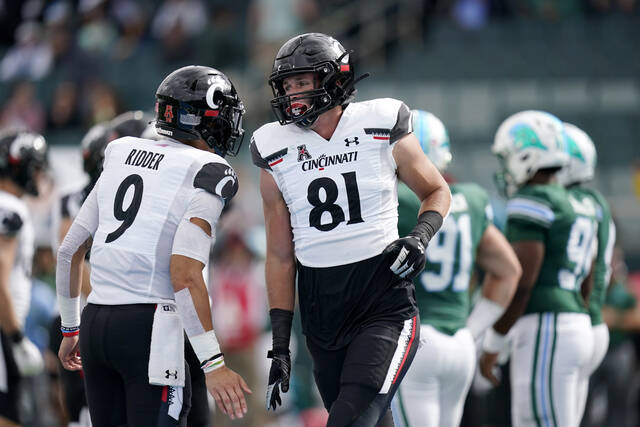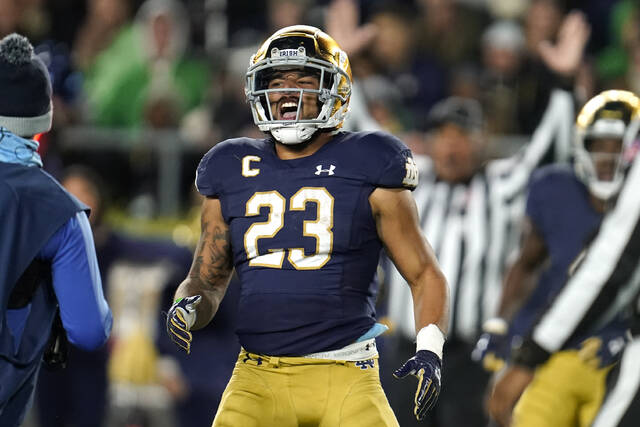

The first College Football Playoff rankings of the season will be unveiled tonight, revealing the scope of the national championship race while also providing Exhibit A in the case for expanding the field.
The current four-team format is fine for crowning a deserving champion, but it has reduced interest in the rest of the non-playoff bowl games among fans, players and even coaches while also narrowing the focus during the final month of the season to fewer than 10% of all major college football teams.
Both the CFP selection committee, charged with rankings teams, and the management committee, responsible for putting together a format to determine a national champion, will be in North Texas this week.
The selection committee’s work is done by Tuesday afternoon. The management committee, comprised of 10 conference commissioners and Notre Dame’s athletic director, is scheduled to meet Wednesday and Thursday as it tries to hammer out the future structure of the CFP. There is a lot of support for a proposed 12-team format, but consensus needs to be unanimous and that is not yet the case.
When the 12-team model was made public in June, participation was touted as one of the main reasons for expansion.
“The practical effect of this will be that with four or five weeks to go in the season, there will be 25 or 30 teams that have a legitimate claim and practical opportunity to participate,” Big 12 Commissioner Bob Bowlsby said back in June. “That should make for an extraordinarily good October and November.”
Without even seeing the committee’s rankings, a glance at the AP Top 25 and seven years of CFP selections make it easy to see which teams head into November with a realistic chance to reach the final four.
Unbeaten Power Five conference teams: Georgia, Oklahoma, Michigan State, Wake Forest.
Power Five teams with one loss and a chance to win a conference: Alabama, Ohio State, Oregon, Michigan, Oklahoma State, Baylor.
History suggests that’s the list.
No team from a non-Power Five conference has ever made the playoff. No team with more than one loss has ever made the playoff.
However, the committee has shown some signs of warming up to schools from the so-called Group of Five conferences in recent years, so slide unbeaten Cincinnati on to that pile.
There is a first time for everything, so if you want to stretch the list — and the imagination — a little further, add a couple of SEC teams that are still in position to win the conference with two losses.
Add Notre Dame with one loss, because you never know.
That’s, at most, 14 of 130 FBS teams with CFP aspirations and five weeks left to play.
If the proposed 12-team format, with automatic bids for the six highest-ranked FBS conference champions, was in place this season, a conservative count of teams that would currently have playoff hopes would be more than double that.
That would include any team from a Power Five conference with two losses or fewer, but in reality even a team with three losses entering November would still be in play to make a run.
“When we did the analysis of this, one of the things that jumped out was in the current model … in four of the last five years, in the initial selection, no one has moved further than from seventh to the final four, which doesn’t promote the long-term interest over the season that we might like,” Notre Dame AD Jack Swarbrick said.
Using past final selection committee rankings to fill out a 12-team bracket with the proposed criteria, 12 teams with at least three losses — all from Power Five conferences — would have made the playoff from 2014-19.
Some fans cringe at the thought of a team with that many Ls reaching the playoff and worry about how that diminishes the importance of the very best regular-season games. Michigan-Michigan State would not have pushed the loser to the brink of elimination.
But a larger field raises the stakes on a game such as No. 12 Auburn at No. 13 Texas A&M on Saturday, and breathes life into November for dozens of teams that otherwise would, at best, be hoping for New Year’s Six bowl bids that their best players may or may not decide to play.
“We think that’s a model that keeps a lot more teams alive a lot longer into the season and generates interest,” Swarbrick said.
___
Follow Ralph D. Russo at https://twitter.com/ralphDrussoAP and listen at http://www.appodcasts.com
___
More AP college football: https://apnews.com/hub/college-football and https://twitter.com/AP_Top25. Sign up for the AP’s college football newsletter: https://apnews.com/cfbtop25



